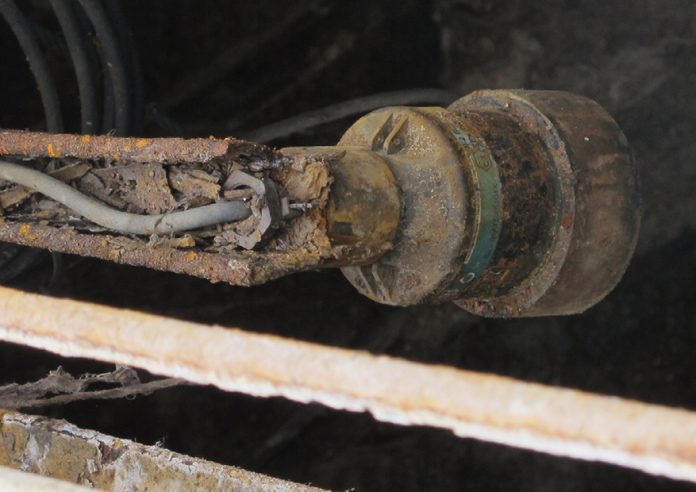When wastewater is transported through sewer networks sometimes the required flow-through velocities are absent, which creates ideal conditions for the extremely toxic and corrosive Hydrogen Sulfide (H2S) gas to develop.
H2S is a toxic malodorous gas and causes many problems for our utility companies and their contractors. It is highly corrosive and physically eats away concrete structures and support steelwork whilst also creating extremely hazardous atmospheres, particularly in confined spaces, that only highly trained operatives with specialist equipment can access safely. In the wider community, the odor can be a significant nuisance to neighboring stakeholders/customers.
At a Terminal Pumping Station in the UK, nmcn plc were tasked with repairing the internal concrete structure of the existing wet well along with replacing all of the support steelwork and bracketry that had been damaged by years of exposure to H2S gas. The Terminal Pumping Station also has to contend with a catchment that suffers with elevated levels of rag and grit within the incoming flow. As well as a gravity section from the nearby village, three other pumping stations from nearby towns discharge at this site totaling an incoming dry weather flow of 110 liters per second. Large submersible pumps discharge the flow down a 2km pressurized main to a large sewage treatment works. The submersible pumps are controlled by a Pulsar dB6 ultrasonic level transducer which is also housed within the existing wet well and has been subject to the same hazardous atmosphere as the concrete and steelwork.
Despite the highly corrosive atmosphere and severe damage caused as shown in the accompanying images, the Pulsar dB6 Transducer is still providing accurate and reliable readings. All surrounding steelwork including the actual bracket that holds the transducer is set to be replaced, but the transducer will remain and be put back into full operation following nmcn’s refurbishment works. The dB6 monitors level within the wet well – a pre-set level is programmed with the accompanying Quantum 3 pump controller, housed in the control panel 20 meters away, which starts a submersible pump as soon as this level is reached to expel the sewage from the wet well. The panel unit also houses an Ultra 5 rack mount controller that is monitoring flow on a different application.
Pulsar Process Measurement transducers benefit from a secure IP68 design, meaning they are dust tight and protected from long term immersion up to a specific pressure. The housing used for the products is valux 375 which is a non-corrosive material. All sensors manufactured by Pulsar Process Measurement are designed around engineering principles to ensure that are not susceptible to easy failure in hazardous/toxic atmospheres.
The dB6 pictured here was installed with a submergence shield which further protects the transducer’s face from being damaged when submerged for a long period of time. With the recent weather events and sudden spike in catchment floods, this has greatly contributed to the reliability of the product.
In addition to submergence shields, Pulsar transducers are also available with PVDF & PTFE faces that are more than suitable for any applications where chemicals/gases are present.
Commenting on the application and general refurbishment of the site, David Greaves, a Mechanical Engineer for nmcn plc said: “Despite the hazardous atmosphere created here on site by the H2S gas, the Pulsar dB6 is still providing accurate and reliable readings for the site, and will continue to after we have completed our works. Credit must be given to Pulsar for supplying a product with high manufacturing standards which has durability and a robustness to continue operating as it’s designed in this dangerous atmosphere.”
To find out more about our full range of transducers and accessories, please visit our website: www.pulsar-pm.com/Instrumentation/Product-Types/Transducers/dB-Transducer-Series



